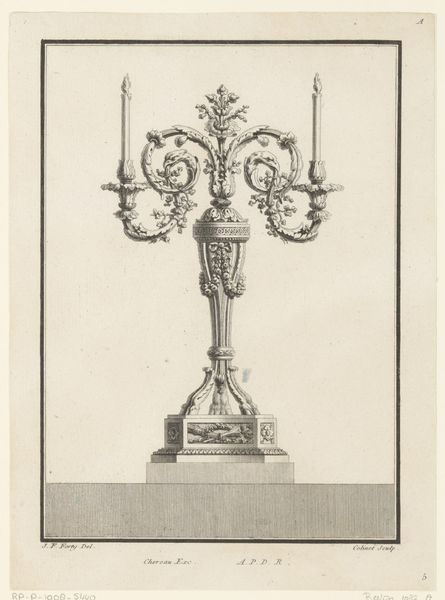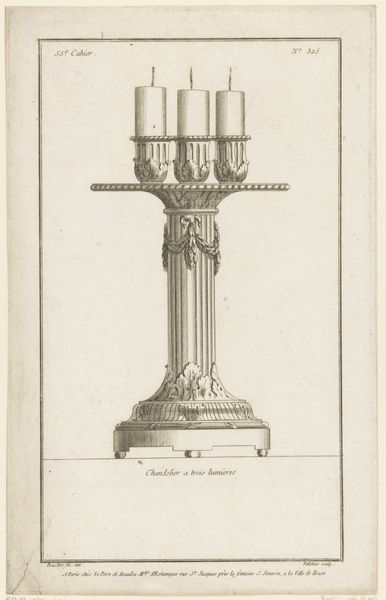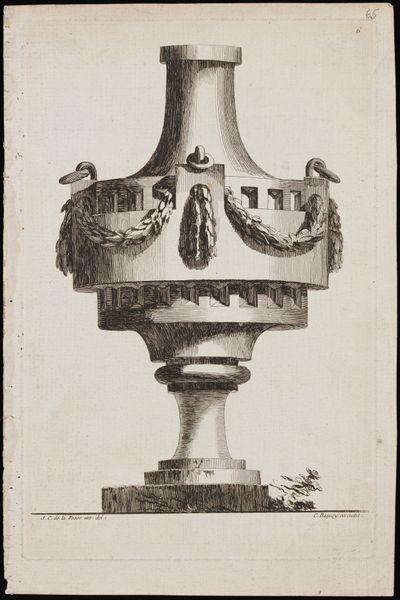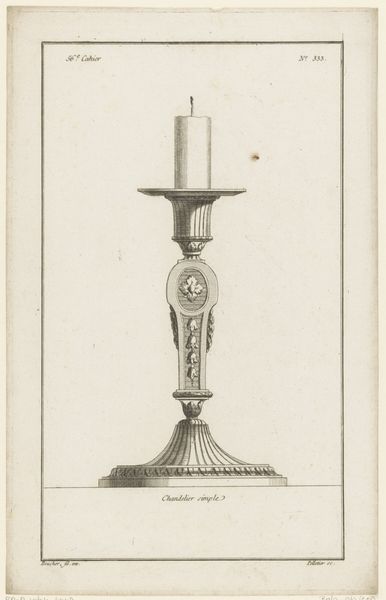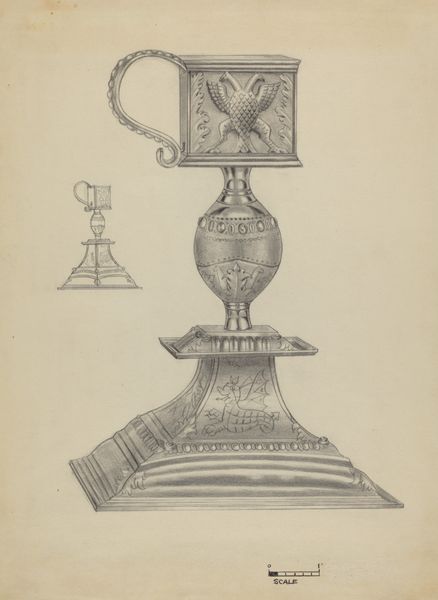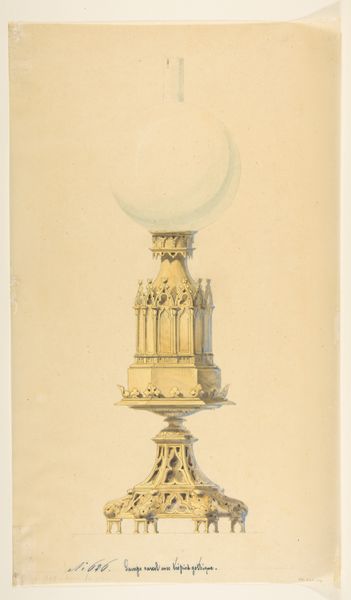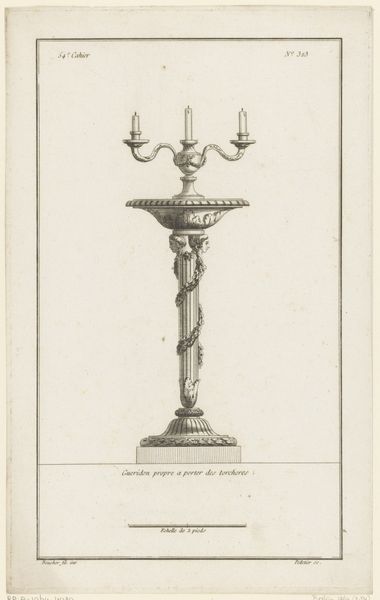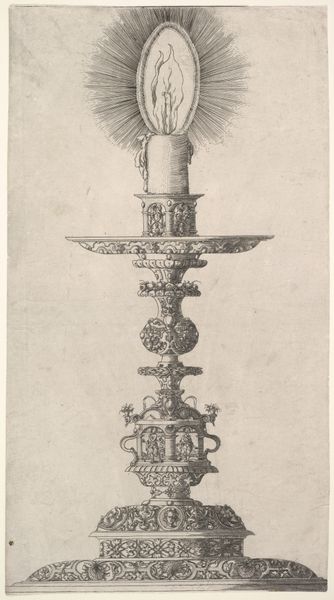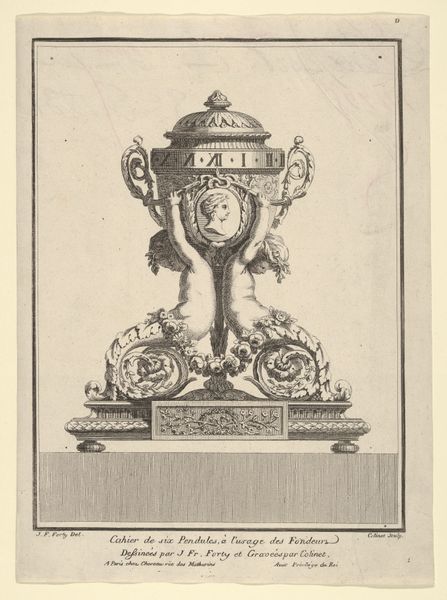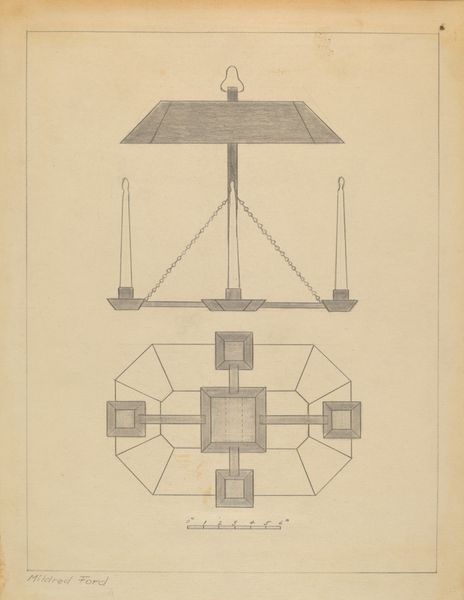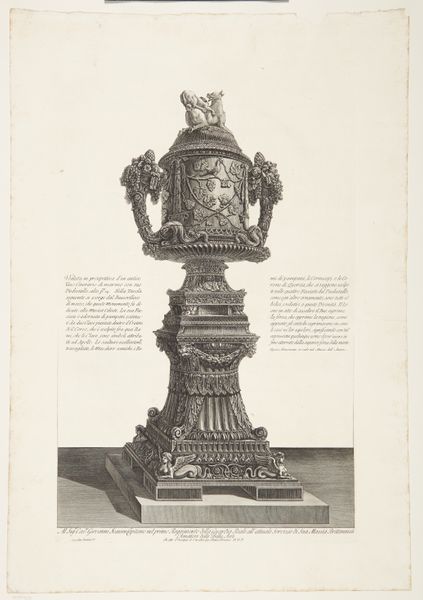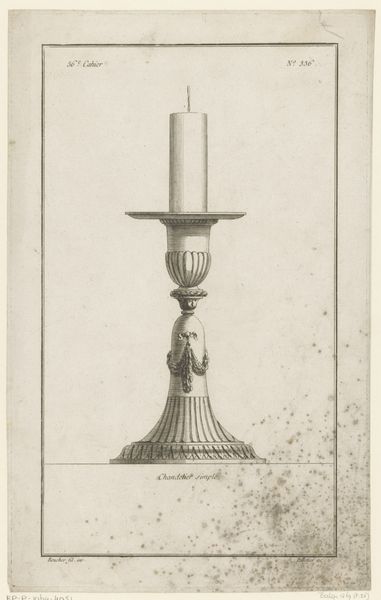
print, engraving
#
baroque
# print
#
form
#
line
#
history-painting
#
academic-art
#
engraving
Dimensions: height 222 mm, width 149 mm
Copyright: Rijks Museum: Open Domain
Curator: Editor: Here we have Jean Baptiste Scotin’s "Planetarium volgens het systeem van Copernicus", a print from between 1688 and 1788. It’s a baroque engraving depicting an ornate armillary sphere. It strikes me as a real display of craftsmanship and intricate design, almost more focused on aesthetics than scientific accuracy. What are your initial thoughts on this piece? Curator: The meticulous labor involved in creating this engraving is key. Look at the fine lines, the detailed ornamentation, and the clear intention to render metal convincingly with ink. Consider also the consumption of this image: it's not simply a scientific diagram but a luxury product, indicating the patron’s wealth and engagement with scientific discourse. This raises questions about the artist's labor: Who was Scotin and what were the social conditions surrounding his work? Editor: That's a good point. I hadn’t thought about the economic aspect. So you're saying we should be looking beyond the scientific subject matter and considering the context of its creation and consumption? Curator: Precisely. The very materiality of the engraving - the paper, the ink, the process of printing - points us toward a world of artisanal production and social status. This wasn't mass production. Think about who had access to it, who would buy it and where would this print be displayed? It reveals power structures and scientific elitism. Editor: The craftsmanship is undeniable; however, is the artistry less valuable when driven by social or economic pressures? Curator: Not at all. Rather, those pressures shaped its very existence, transforming scientific knowledge into an object of luxury and status. What appears purely ornamental becomes a window onto a specific historical moment and class structure. The materiality isn't merely a neutral element, but an active agent in constructing meaning and enforcing the hierarchy of that time. It shows who had power. Editor: This has really opened my eyes to aspects beyond the obvious subject. Thank you for making me see it differently. Curator: Likewise! Focusing on the material aspects always reveals hidden narratives about labour, consumption, and social power.
Comments
No comments
Be the first to comment and join the conversation on the ultimate creative platform.
